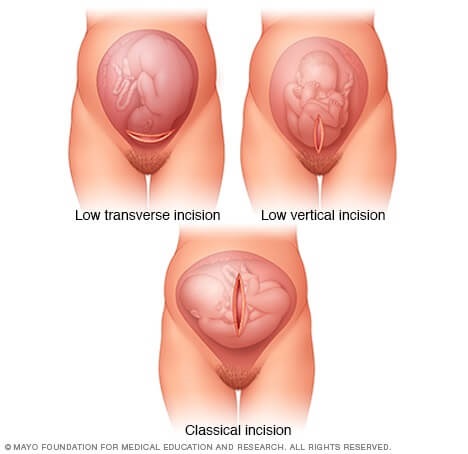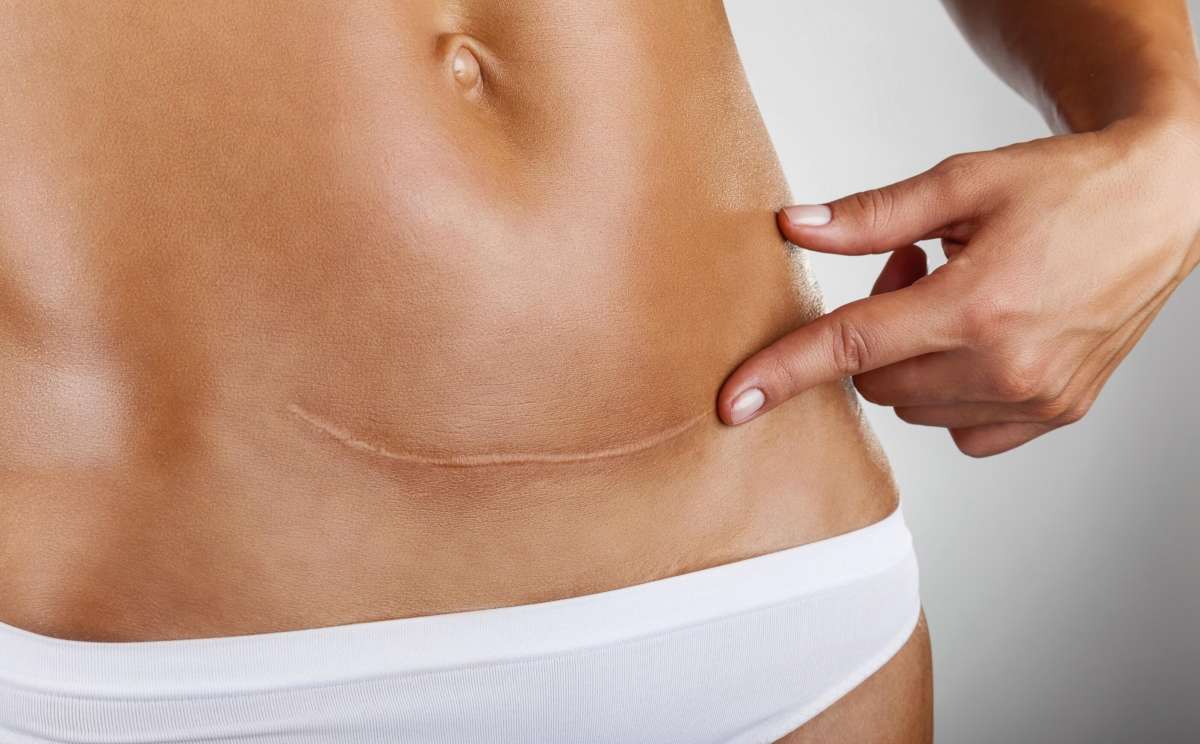Get the Facts: Top 5 Myths and Truths About C-Sections

There are so many rumors floating around about C-sections, ranging from, "Are they really necessary?" to "Recovery is the absolute worst." As a new, (hormonal) mom or mom-to-be, there's information overload out there. Why not break it all down? I consulted with two esteemed OB-GYN's to decipher C-section myths and explain what is true, and what is false, about having a C-section.
MYTH: OBG-GYN's "push" C-sections on moms because it's easier and "faster."

Fact: If you feel like your doctor is doing this to you--be cautious. "OBGYN's have years of arduous medical training. We (doctors) hope that other doctors out there 'follow the rules' and that is, wanting the best outcomes for their two—yes, two—patients: mom and baby," says Dr. Jill Rabin, Head, Urogynecology, Long Island Jewish Medical Center in New Hyde Park, New York. "Sometimes, the best outcome for a safe delivery is to perform a C-section."
You may want a vaginal delivery, but sometimes doctors have to make the best (safest and healthiest) decision for you and your baby within minutes, even split seconds. "Patients should first find a doctor who has their best interests in mind, always; that they feel comfortable with, and a doctor should never perform a procedure for their own convenience."
- Now, with that said, adds Dr. Rabin, moms should understand that the doctor made a specific decision—to perform a C-section, for example—with your health and baby's health in mind and the doctor's goal is to deliver you a healthy baby in the safest means possible, "even if that meant performing a C-section although vaginal was your preference."
- Overall, says Dr. Rabin, when it comes to OB-GYN's, find someone you trust, not just someone who is convenient.
MYTH: Once you have a C-section you can NEVER deliver a baby vaginally again.

Fact: False."After you have a c-section you can have a vaginal delivery. You may have what is called a VBAC, a vaginal birth after cesarean," says Dr. Pari Ghodsi, a Los Angeles-based OBGYN. "The procedure has risks and you will need to talk to your doctor about if it is right for you, but a vaginal delivery after a cesarean is definitely not a NEVER."
However, there are some things to note, explains Dr. Rabin. "If you previously had a classical cesarean section (vertical cut rather than horizontal) for any subsequent delivery it is always C-section because it's cutting through the contractile portion of the uterus at right angles to the direction of the uterine contraction."
Also, a TOLAC (Trial of Labor after C-section) will determine if your labor can be a vaginal delivery (after C-section) or not; as previously mentioned, it may need to be determined in real time based on many factors. According to ACOG, a TOLAC is the attempt to have a vaginal birth after cesarean delivery. If you are open to, or interested in, a VBAC, it's best to let your doctor know in advance.*
MYTH: The most common type of C-section is called a low transverse section.

Fact: True. According to Dr. Rabin, most of the time if you've had the type of c-section that is almost always done, especially in the United States--called the low transverse section--most women can have a TOLAC for subsequent pregnancies. "This refers to the type of incision that is made on the uterus, not necessarily on the skin."
These are the three types of C-section incisions, based on info from The Mayo Clinic:
- Low transverse incisions are the most common.
- A low vertical incision might be used if your baby is in an awkward position.
- Classical incisions are usually reserved for rapid delivery or for very preterm fetuses
Note: A C-section includes an abdominal incision and a uterine incision. After the abdominal incision, the OB-GYN will make an incision in your uterus.
MYTH: It's harder to breastfeed babies born via C-section.

Fact: False. "This is actually not true," says Dr. Rabin. "But in general if you are having trouble breastfeeding—regardless of a vaginal or C-section birth—consult with a lactation specialist." Most hospitals have some on staff or can refer you to one. A lactation specialist can help you find a comfortable position for breast-feeding post surgery. "They can support you, and teach you, as you attempt to breastfeed."
MYTH: The C-section scar never, ever fades.

Fact: False, but remember that everyone's body, and skin, is different. "C-section scars fade like any other scar," says Dr. Ghodsi. "Some people heal easier than others. Your doctor can give you creams to help with your healing."
MYTH: You are completely unconscious (very drugged up) during the procedure.

Fact: True, but it's not very common, so most likely, no. Wait, what?! Ok, don't panic. Most women are absolutely conscious during the procedure. "You are not unconscious during a C-section unless it is emergent," says Dr. Ghodsi. "In a typical C-section, you are simply numb from the waste down so you are conscious when your baby arrives. In an emergency setting, you may have to be put to sleep to get the baby out as quickly as possible."
MYTH: Your stomach muscles/abs are destroyed and you'll forever have a muffin-top.

Fact: False. "You and your doctor must decide on the best course of action for your fitness routine, post-surgery," says Dr. Rabin. "Remember that a C-section is a surgery, so you do need to heal completely before starting a more intense fitness routine." Some doctors will recommend waiting 6 weeks for your connective tissue to heal if you've had a C-section. After 6 weeks, Dr. Rabin advises new moms to "consult with your doctor about stress and strain on the body during workouts; what they think you can and cannot handle."
* According to UpToDate.com, a trial of labor after cesarean (TOLAC) is a planned attempt to labor by a woman who has previously undergone a cesarean delivery and desires a subsequent vaginal delivery. A VBAC is a "successful" trial of labor resulting in a vaginal birth.

